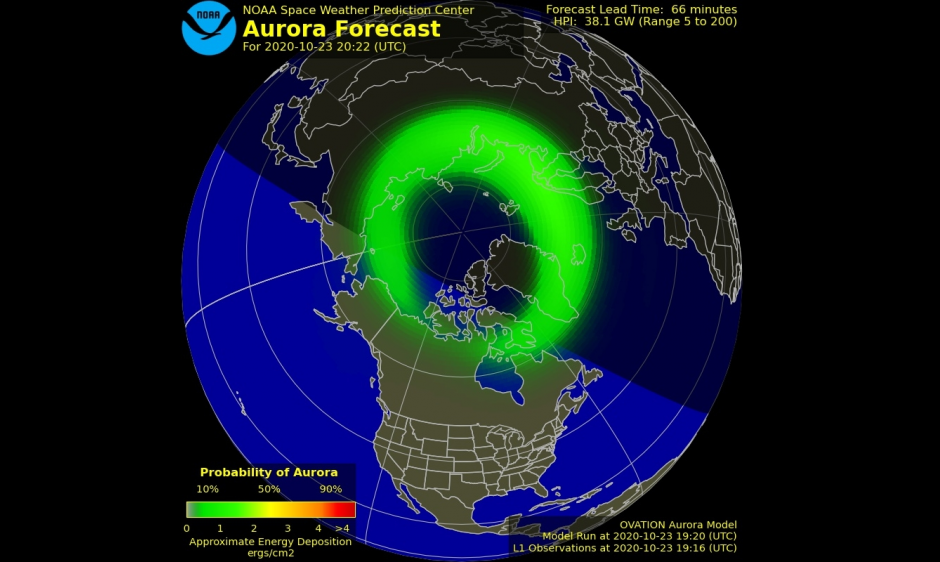
The Space Weather Prediction Center is pleased to announce the operational release of improved 30 minute auroral prediction maps beginning October 28th. These maps are based on the OVATION-2013 model, which has an expanded range of geomagnetic activity coverage. The prior version only provided estimates for geomagnetic storm levels of Kp of 7 or less, whereas the new version provides estimates for geomagnetic storms up to the maximum level of Kp = 9. In addition, the model now provides a more accurate auroral location by using an improved geomagnetic field model. Numerical gridded output from the model is provided in JSON format for better automated access. The new model is written in Python (rather than IDL) to enhance model reliability and maintenance. Please see https://www.swpc.noaa.gov/products/aurora-30-minute-forecast on October 28th for the latest maps and additional information.